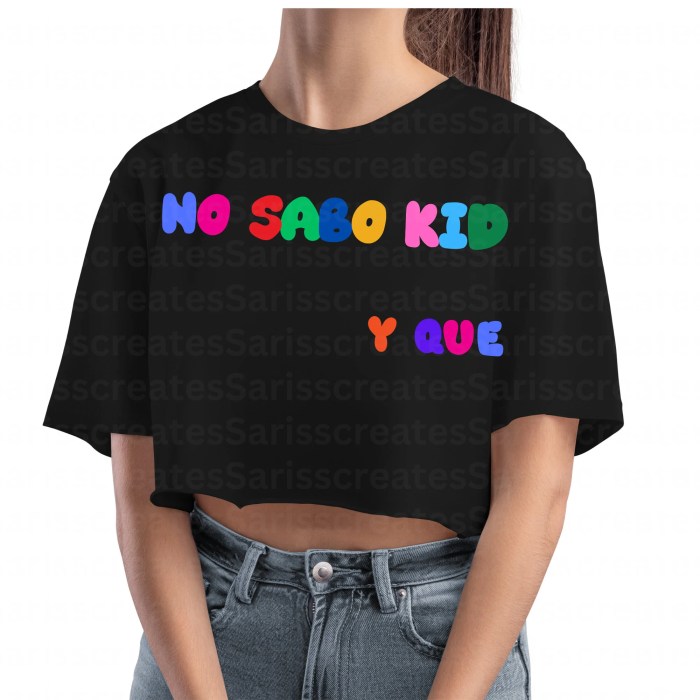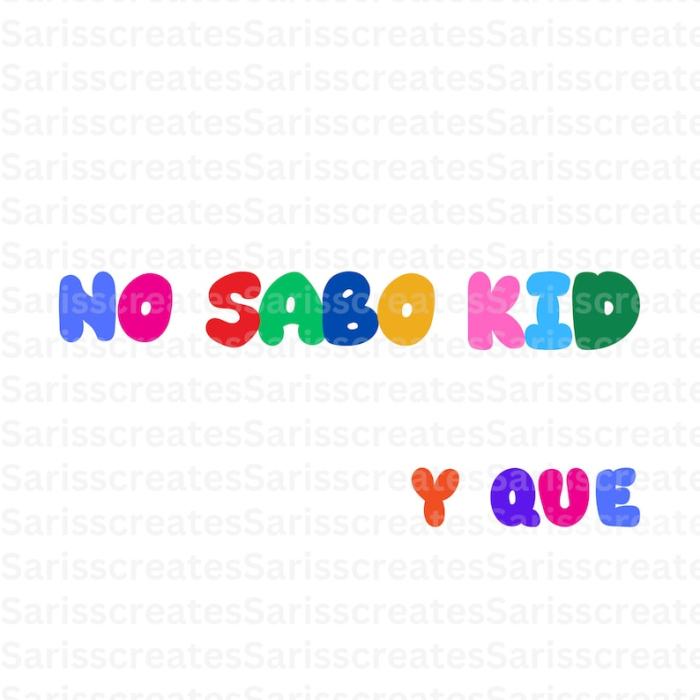Embark on a linguistic adventure with our “no sabo kid words list,” a comprehensive guide to fostering age-appropriate language and communication skills in children. This meticulously curated list serves as a valuable resource for parents, educators, and anyone dedicated to nurturing the linguistic growth of young minds.
Language is a powerful tool that shapes children’s cognitive development, social interactions, and educational experiences. Our list provides a foundation for effective communication, empowering children to express themselves clearly, resolve conflicts, and build meaningful relationships.
Vocabulary Analysis

A “no sabo kid words list” is a compilation of words that are considered inappropriate or harmful for children. These words may include swear words, racial slurs, or other offensive terms.
Using age-appropriate language with children is important for several reasons. First, it helps children to develop a positive self-image. When children are exposed to negative or harmful language, they may internalize these messages and believe that they are bad or worthless.
Second, using age-appropriate language helps children to learn how to communicate effectively. When children are exposed to complex or unfamiliar language, they may have difficulty understanding what is being said to them. Finally, using age-appropriate language helps children to develop a sense of respect for others.
When children are exposed to offensive or disrespectful language, they may learn to disrespect others.
Examples of Words on a No Sabo Kid Words List
- Swear words
- Racial slurs
- Offensive terms
- Body shaming
- Hate speech
Language Development

Language development in children is a fascinating and complex process that begins in infancy and continues throughout childhood. It involves the acquisition of both receptive language (understanding spoken and written language) and expressive language (speaking and writing).
Stages of Language Development
Language development typically progresses through several stages:
- Cooing and babbling (0-6 months):Infants produce vowel-like sounds and consonant-vowel combinations, such as “ba-ba” and “da-da.”
- First words (6-12 months):Children begin to produce single words, typically nouns or verbs, such as “mama” or “ball.”
- Two-word combinations (12-18 months):Children start to combine two words to express simple ideas, such as “mommy milk” or “go bye-bye.”
- Multi-word speech (24-36 months):Children’s speech becomes more complex and includes longer sentences, grammatical markers, and a wider vocabulary.
- Emergent literacy (3-5 years):Children develop an understanding of print and written language, including letters, sounds, and simple words.
li> Telegraphic speech (18-24 months):Children produce short sentences that lack function words (e.g., articles, prepositions) and grammatical markers, such as “Mommy go store.”
Exposure to New Words, No sabo kid words list
Exposure to new words is essential for language development. Children learn new words through interactions with their parents, caregivers, and peers, as well as through reading, listening to stories, and playing with language-rich toys.
Research shows that children who are exposed to a wide range of words have larger vocabularies and better language skills. This is because exposure to new words helps children to:
- Expand their vocabulary
- Develop their understanding of the world around them
- Improve their communication skills
- Enhance their cognitive abilities
Tips for Parents
Parents can encourage language development in their children by:
- Talking to their children often and using a wide range of vocabulary
- Reading to their children daily and discussing the stories
- Singing songs and playing games that involve language
- Providing opportunities for their children to interact with other children and adults
- Creating a language-rich environment at home, with books, toys, and other materials that promote language development
By following these tips, parents can help their children develop strong language skills that will benefit them throughout their lives.
Communication and Relationships

Language plays a crucial role in fostering relationships by facilitating communication, understanding, and empathy. It allows individuals to express their thoughts, feelings, and intentions, thereby creating a bridge between them.
The no sabo kid words list is a valuable resource for parents who want to teach their children to speak clearly. How To Sum In Excel can help you quickly calculate the total of a range of numbers, making it a useful tool for both kids and adults.
Using Appropriate Language
Using appropriate language is essential for effective communication. This includes using respectful and non-judgmental language, being mindful of tone and body language, and adapting language to different audiences and situations.
Resolving Conflicts
Language can be a powerful tool for resolving conflicts. By using empathetic language, individuals can acknowledge the feelings of others and work towards finding common ground. Additionally, using clear and specific language can help to avoid misunderstandings and facilitate productive dialogue.
Building Understanding
Language can also be used to build understanding between individuals. By sharing stories, experiences, and perspectives, individuals can gain insights into each other’s lives and develop a deeper understanding of their values and beliefs.
Educational Implications: No Sabo Kid Words List

A “no sabo kid words list” can be a valuable tool in educational settings, providing a foundation for language development and literacy skills. By introducing children to new words and encouraging their use in everyday communication, educators can help them expand their vocabularies and improve their overall language proficiency.
Activities for Learning New Words
There are numerous activities that can be used to help children learn new words. Some effective strategies include:
- Reading aloud:Reading to children exposes them to a wide range of vocabulary, including words they may not encounter in their everyday conversations.
- Word games:Games like Scrabble, Bananagrams, and Word Twister encourage children to think creatively and expand their vocabulary.
- Storytelling:Encourage children to create and tell their own stories, which allows them to practice using new words in context.
- Vocabulary lists:Provide children with lists of new words and their definitions, and encourage them to use the words in their writing and speaking.
- Visual aids:Using pictures, flashcards, or videos can help children associate new words with concrete objects or concepts.
Cultural Considerations

Language is not just a means of communication; it is also a reflection of the culture in which it is spoken. Different cultures have different ways of expressing themselves, and it is important to be sensitive to these differences when using language.
For example, in some cultures, it is considered polite to use indirect language, while in others, it is considered more direct. In some cultures, it is considered important to show respect for elders, while in others, it is considered more important to show respect for those in authority.
By being aware of these cultural differences, we can avoid misunderstandings and communicate more effectively.
Tips for Parents
- Expose your children to different cultures from a young age.
- Encourage your children to ask questions about different cultures.
- Help your children to understand that there is no one right way to communicate.
- Teach your children to be respectful of other cultures.
General Inquiries
What is the purpose of a “no sabo kid words list”?
A “no sabo kid words list” provides age-appropriate vocabulary that supports language development and effective communication in children.
How can I use the “no sabo kid words list” in educational settings?
The list can be incorporated into activities like storytelling, games, and discussions to expand children’s vocabulary and foster their language skills.
Why is it important to be sensitive to cultural differences when using language?
Language can vary across cultures, and it’s essential to be aware of these differences to avoid misunderstandings and promote inclusivity.